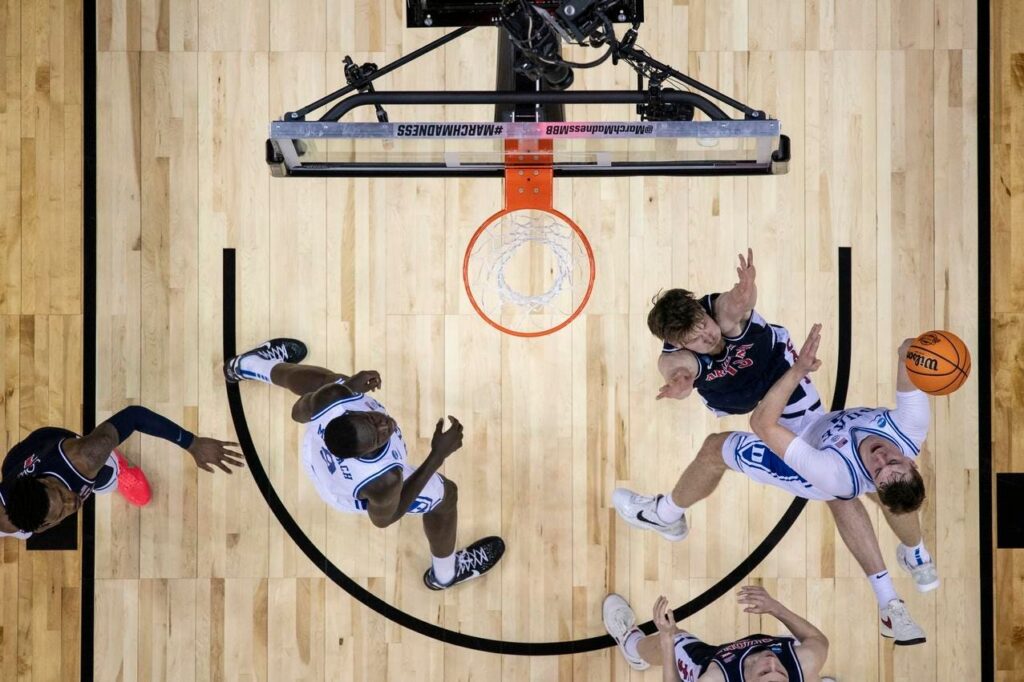NEWARK, NEW JERSEY – MARCH 27: Cooper Flagg #2 of the Duke Blue Devils attempts a layup against the … More
NCAA Photos via Getty ImagesCollege basketball is undergoing a transformative phase where financial strength and brand-building opportunities are reshaping the game. Major men’s programs are expected to increase their annual budgets from the current $3-5 million to between $5-8 million next season. At the same time, the emergence of Name, Image, and Likeness (NIL) deals—some reportedly valued at $1.2–$1.4 million—are influencing how players approach their collegiate careers and, ultimately, their path to the NBA.
Escalating Financial Commitments and Their Implications
In a fiercely competitive recruiting environment, college programs are significantly ramping up their investments. These funds are not only fuelling improvements in facilities and coaching but also expanding comprehensive support systems that include sports science, nutrition, and academic services. Such investments are creating professional-level training environments that attract top talent and encourage players to extend their college careers. This shift can lead to a more mature, polished cohort of athletes entering the NBA, although it could also result in fewer one-and-done prospects.
The NIL Revolution and Player Decision-Making
The introduction of NIL opportunities has given athletes the chance to build lucrative personal brands without sacrificing their college eligibility. This new financial dynamic is influencing decision-making within college basketball. With agents negotiating deals that can secure over a million dollars for standout players, many athletes now see a viable alternative to jumping straight into the NBA. The ability to earn significant income while continuing to refine their skills may encourage players to delay their draft entry, allowing them to enter the league more seasoned and better prepared for professional challenges.
Arkansas: A Case Study in Strategic Investment
FAYETTEVILLE, ARKANSAS – APRIL 10: New Arkansas Razorbacks basketball head coach John Calipari holds … More
Getty ImagesAmong the programs leading this financial revolution is the University of Arkansas. The Razorbacks have significantly strengthened their position in the NIL landscape, thanks in part to substantial support from influential figures. Billionaire John H. Tyson, chairman of Tyson Foods, has played a pivotal role by channeling considerable funds into the program. This financial backing has facilitated the hiring of high-profile coach John Calipari and allowed Arkansas to set an NIL budget reportedly exceeding $5 million. Such strategic moves underscore the university’s commitment to leveraging financial resources to attract and develop elite talent, thereby enhancing the overall competitiveness of their program.
Impact on the NBA Pipeline
NEW YORK, NEW YORK – JUNE 26: NBA commissioner Adam Silver prepares to announce the first round pick … More
Getty ImagesThe combined effect of increased college spending and robust NIL opportunities is poised to reshape the NBA’s talent pipeline in several ways:
1. Extended Collegiate Careers: With the appealing combination of advanced training facilities and substantial NIL earnings, players may choose to remain in college longer. This trend could result in a steady influx of more mature and well-rounded prospects entering the NBA, though it might also decrease the number of classic one-and-done stars.
2. Evolving Draft Strategies: NBA teams will need to adapt their scouting and development strategies to account for athletes benefitting from extended periods of structured growth. The focus may shift toward evaluating experience, maturity, and proven performance rather than just raw, untapped potential.
3. Broader Talent Distribution: As more programs, like Arkansas, invest heavily in both athletic and financial development, the talent pool may become more evenly distributed. This could lead to increased competitiveness among college programs, ultimately influencing the diversity and quality of players making the transition to the NBA.
The rising tide of college spending, combined with the transformative impact of NIL deals, is creating a new landscape for basketball. For athletes, these changes present the opportunity to secure financial stability while honing their skills in a top-tier development environment. For college programs, the increased financial commitment serves as a strategic tool to attract and retain top talent. For the NBA, this evolving scenario requires adapting scouting and development practices to a new era of college basketball, where maturity and long-term growth increasingly define success. The future of the NBA pipeline is being reshaped as both collegiate and professional teams adjust to this dynamic financial and developmental environment.
Read the full article here


